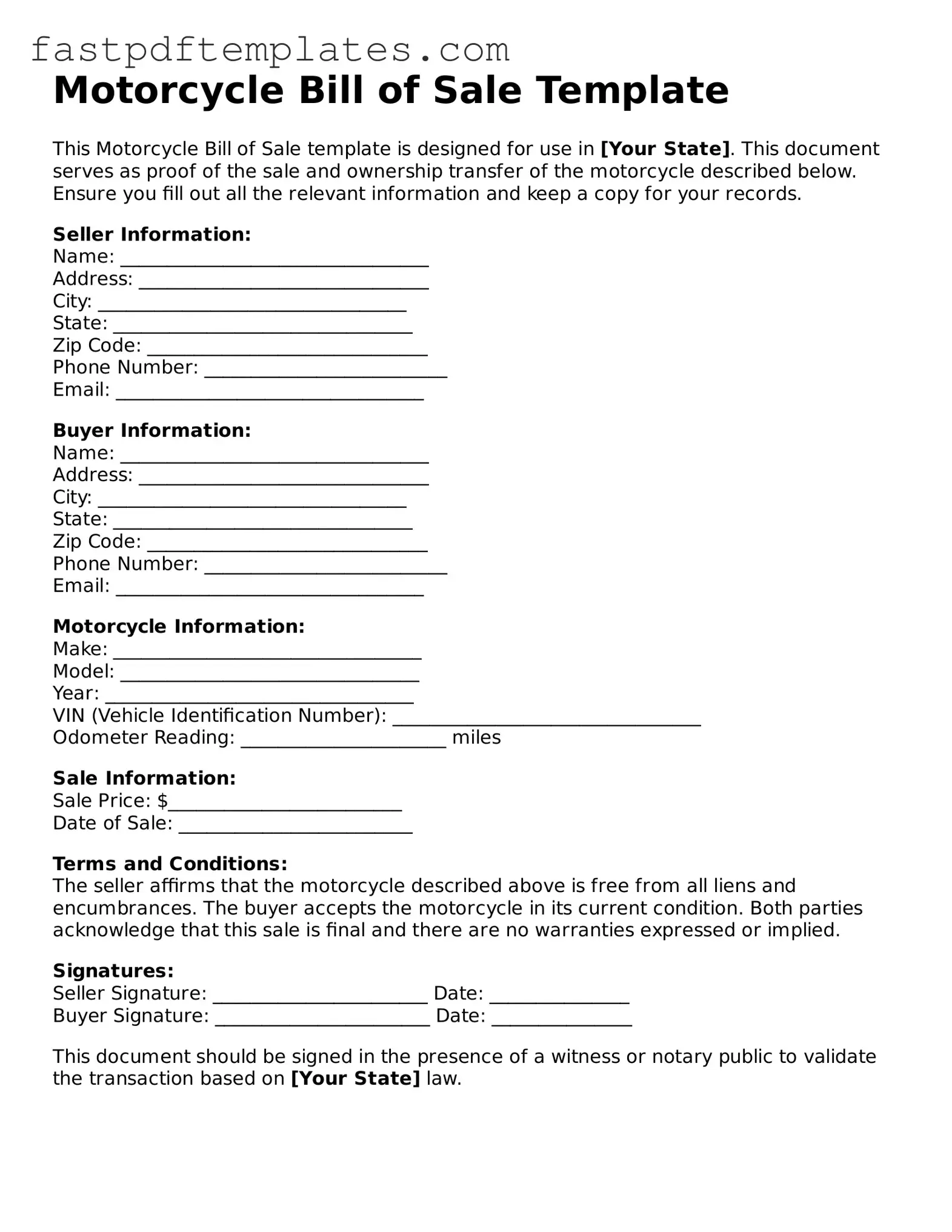The Motorcycle Bill of Sale form shares similarities with the Car Bill of Sale. Both documents serve as proof of transfer of ownership from the seller to the buyer. They typically include details such as the vehicle's make, model, year, and VIN, along with the names and addresses of both parties. This documentation is crucial for registering the vehicle in the new owner's name and can help resolve any disputes regarding ownership in the future.
Another related document is the Boat Bill of Sale. Like the Motorcycle Bill of Sale, it records the sale of a specific watercraft. It includes information about the boat, such as its hull identification number, make, and model. This document protects both the buyer and the seller by providing a clear record of the transaction, which is necessary for registration and titling purposes.
The ATV Bill of Sale is also comparable. This form is used when an all-terrain vehicle is sold. It captures essential details about the ATV, including its VIN and specifications. Similar to the motorcycle version, it provides legal protection for both parties and is often required for registration with state authorities.
The Trailer Bill of Sale serves a similar purpose for trailers. This document outlines the transaction details, including the trailer’s VIN, make, and model. By documenting the sale, it ensures that the new owner can register the trailer legally and helps prevent any disputes regarding ownership.
In addition, the Snowmobile Bill of Sale is another document that parallels the Motorcycle Bill of Sale. It records the sale of a snowmobile, including vital information like the model, year, and VIN. Just like with motorcycles, this form is essential for the buyer to register their new snowmobile and establish ownership rights.
The RV Bill of Sale is also noteworthy. This document is used for the sale of recreational vehicles. It includes detailed information about the RV, such as its make, model, and VIN. Similar to the motorcycle bill of sale, it provides a clear record of the transaction, ensuring both parties are protected and facilitating the registration process.
The Gun Bill of Sale is another document that shares similarities. While it pertains to firearms, it functions in a comparable manner by documenting the transfer of ownership. It typically includes details about the firearm, such as its make, model, and serial number, ensuring that both parties have a record of the transaction and compliance with state regulations.
The Personal Property Bill of Sale is broader but still relevant. This document can be used for various types of personal property sales, including vehicles. It captures the essential details of the transaction, providing a legal record that protects both the buyer and seller. It is particularly useful when dealing with items that do not have a title, ensuring that ownership is clearly established.
Lastly, the Lease Agreement can be compared to the Motorcycle Bill of Sale in that both documents outline terms related to ownership or possession. While a lease agreement typically pertains to rental situations, it still formalizes the relationship between parties, detailing responsibilities and rights, similar to how a bill of sale formalizes the transfer of ownership.
